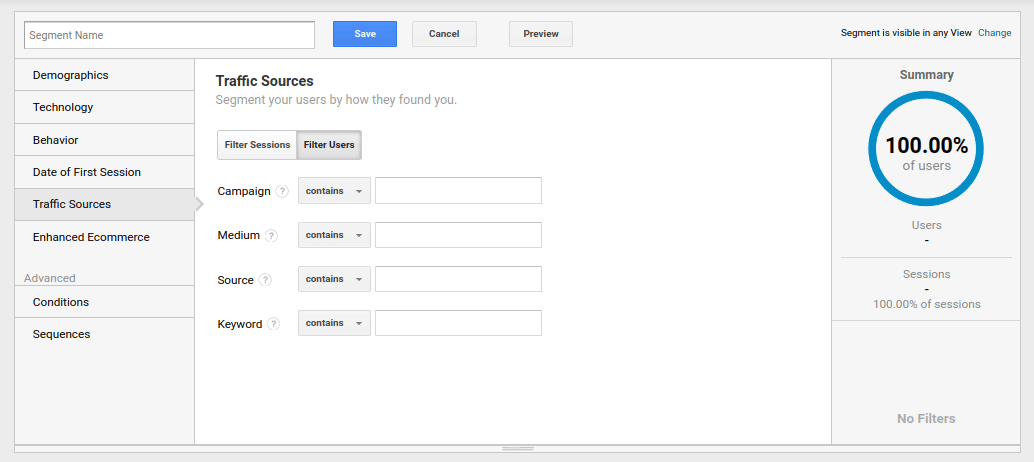Maximizing Your Campaigns with Remarketing In Google Analytics
Maximizing Your Campaigns with Remarketing In Google Analytics
Blog Article
Harnessing Remarketing in Google Analytics: A Comprehensive Overview
Using remarketing in Google Analytics supplies companies a strategic edge in reaching out to potential customers. This overview will certainly drop light on the essential steps included in utilizing the full capacity of remarketing in Google Analytics, leading to improved marketing outcomes.
Recognizing Remarketing in Google Analytics
Remarketing in Google Analytics allows organizations to purposefully target customers that have actually previously interacted with their website or mobile app. By leveraging data from Google Analytics, organizations can create tailored remarketing lists based upon individual actions, such as web pages visited, actions taken, or specific objectives achieved. This effective device enables businesses to re-engage with users that have revealed rate of interest in their services or products, ultimately raising the likelihood of conversion.
Understanding the various types of remarketing approaches is crucial for a successful project - What Is “Remarketing” In Google Analytics?. Google Analytics provides different choices, including basic remarketing, vibrant remarketing, and remarketing checklists for search ads (RLSA) Each type offers an one-of-a-kind function and can be tailored to meet particular advertising goals
Additionally, examining the performance of remarketing campaigns is necessary for maximizing results. Google Analytics supplies beneficial understandings right into the efficiency of different remarketing techniques, enabling organizations to make data-driven decisions and refine their targeting method. By continually readjusting and checking remarketing efforts based upon analytics information, organizations can maximize ROI and drive success in their marketing initiatives.
Establishing Remarketing Campaigns

After establishing up target market listings, the next step is to connect Google Analytics with Google Advertisements. By connecting these two platforms, businesses can seamlessly transfer audience listings from Google Analytics to Google Ads for remarketing functions. This integration permits more specific targeting and better project performance.
When the accounts are linked, businesses can create remarketing projects in Google Ads utilizing the audience lists formerly specified in Google Analytics. These projects can be personalized with specific ad creatives, messaging, and bidding process techniques to effectively re-engage with past site visitors and drive conversions. By complying with these actions, businesses can take advantage of the power of remarketing to improve their advertising and marketing initiatives and raise ROI.
Making Use Of Target Market Division Methods

Predefined sectors in Google Analytics permit you to promptly examine usual audience categories like brand-new customers, returning individuals, or users who look these up completed a specific goal on your internet site. Customized sectors, on the other hand, enable you to create distinct sectors based upon certain criteria that are very important to your service purposes. Dynamic remarketing listings instantly readjust based upon individual actions, showing customized ads to users who have actually communicated with your website specifically means.
Studying Remarketing Performance Metrics
Upon evaluating the efficiency of remarketing campaigns in Google Analytics, the evaluation of vital performance metrics provides beneficial insights into target market interaction and conversion prices. By delving into metrics such as click-through rates (CTR), conversion rates, price per purchase (CPA), and return on ad invest (ROAS), online marketers can assess the success of their remarketing initiatives. Evaluating these metrics enables marketing experts to maximize projects, fine-tune target market targeting, and allot budgets efficiently to improve total remarketing efficiency.
Maximizing Remarketing Strategies
When refining remarketing approaches in Google Analytics, concentrating on target market division is vital for attaining campaign success. By separating your audience right into particular segments based upon their behavior, demographics, or rate of interests, you can customize your advertisements better per group. This targeted method boosts the likelihood of engaging individuals who have actually already shown interest in your services or products, causing greater conversion prices.
Another vital facet of maximizing remarketing approaches is constantly screening and refining your projects (What Is “Remarketing” In Google Analytics?). A/B testing different ad creatives, messaging, or deals can aid you determine what reverberates ideal with your audience and drives the most conversions. By evaluating the efficiency of these tests in Google Analytics, you can make data-driven decisions to maximize your remarketing initiatives even more
Additionally, leveraging dynamic remarketing can dramatically enhance your project results. This attribute allows you to show customized advertisements to users based on their previous interactions with your internet site, showcasing solutions or products they have previously checked out. By delivering customized material to individuals based on their interests and habits, dynamic remarketing can help increase engagement and drive conversions.
Verdict
In final thought, harnessing remarketing in Google Analytics is a strategic strategy to target individuals that have actually previously involved with an internet site. By developing personalized target market lists and utilizing target market segmentation methods, services can optimize remarketing advocate enhanced conversion rates. Analyzing efficiency metrics and continually optimizing pop over here techniques are crucial for maximizing the effectiveness of remarketing efforts.
Google Analytics offers numerous alternatives, including conventional remarketing, dynamic remarketing, and remarketing lists for search advertisements (RLSA)After establishing up target market checklists, the following action is to link Google Analytics with Google Advertisements. By connecting these two systems, businesses can perfectly transfer audience checklists from Google Analytics to Google Advertisements for remarketing functions.As soon as the accounts are connected, organizations can produce remarketing projects in Google Ads using the audience provides formerly defined in Google Analytics.When refining remarketing techniques in Google Analytics, focusing on target market division is vital for achieving campaign success.
Report this page